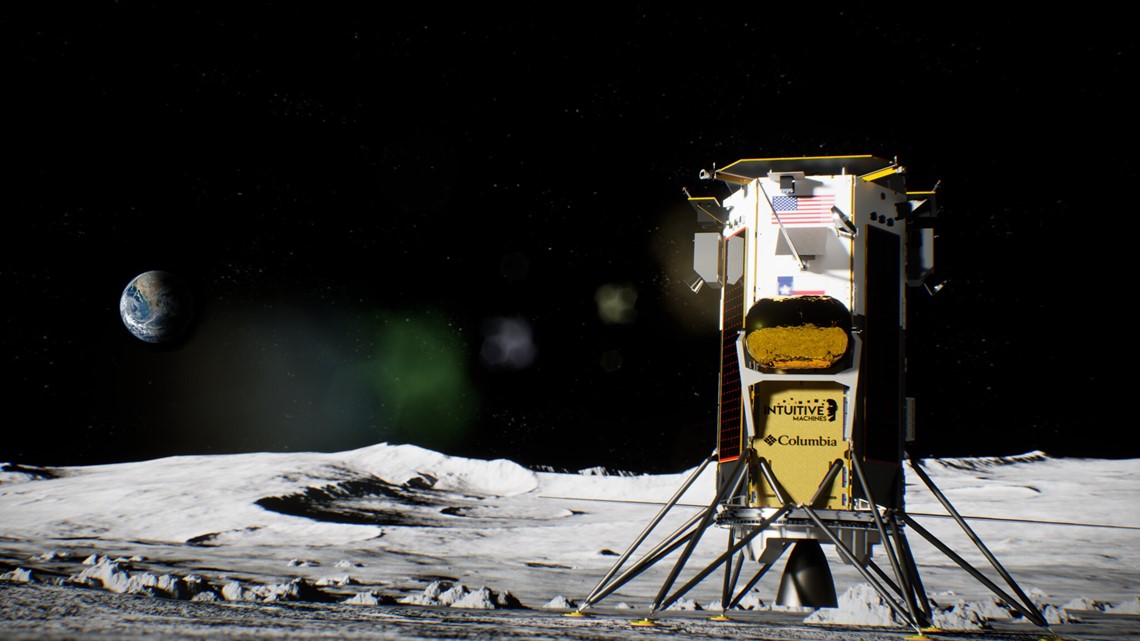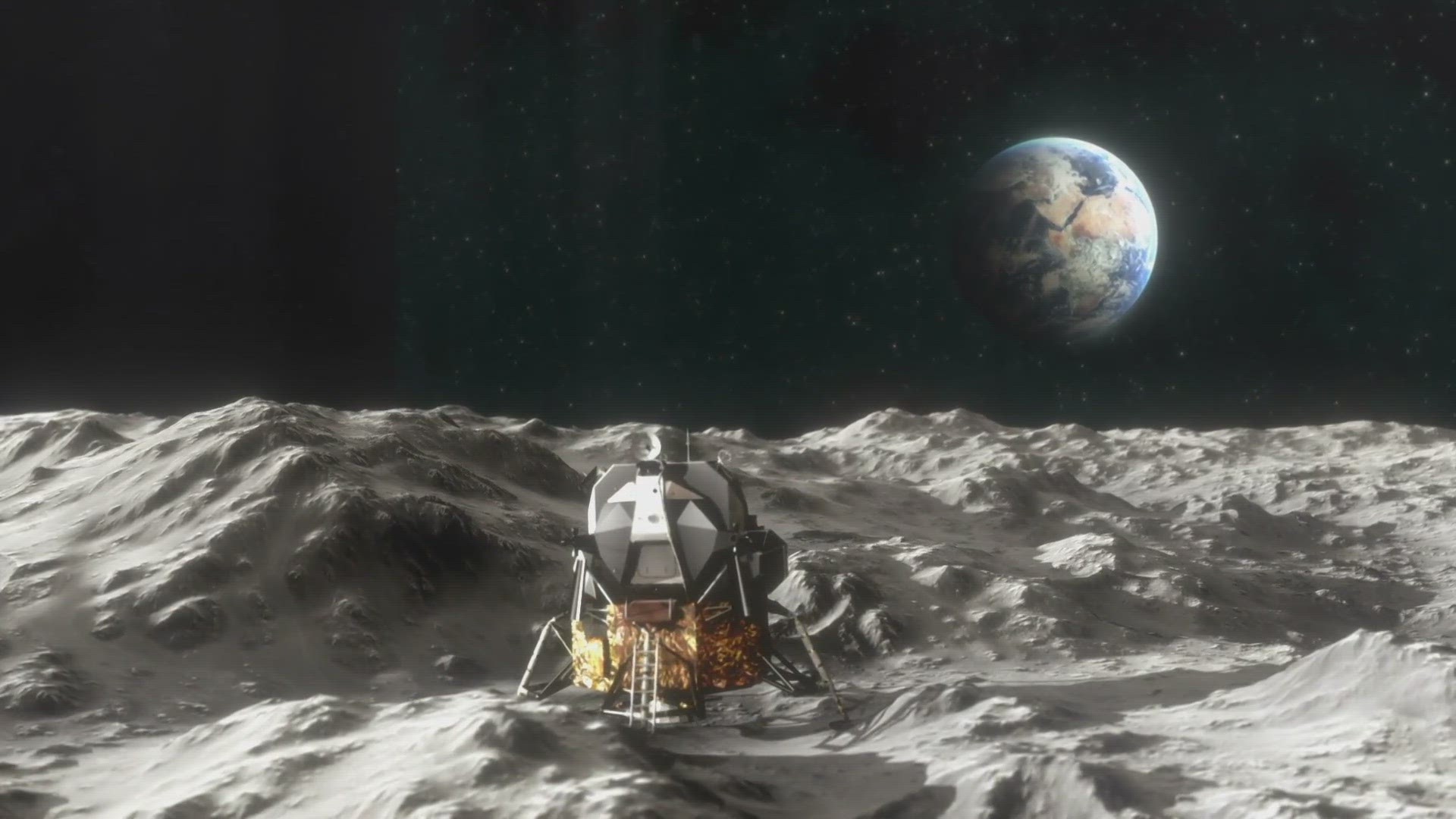BOULDER, Colo. — America is officially back on the moon. The uncrewed lander named Odysseus made a successful touchdown on the moon’s south pole just before 4:30 on Thursday afternoon. The commercial craft built by Houston-based Intuitive Machines is the first American spacecraft to land on the moon since Apollo 17 in 1972.
Another American spacecraft bound for the moon in January had a catastrophic fuel leak on the rocket during launch and disintegrated in the Earth's atmosphere. Israel, Japan and Russia have all had failed moon missions over the past five years.
“It’s funny because I think we feel like it is easy because we watch movies and television where they just blast engines and hit a button or something," said Joshua Hibbard, a Ph.D. candidate at the University of Colorado Astrophysical and Planetary Sciences department. "But the reality is that it's still one of the most difficult things humans have ever done.”
The Odysseus lander carried six scientific instruments to the moon's surface as part of NASA's Commercial Lunar Payload Services. The program wants commercial aerospace companies to build and deliver science to the moon with the mission of setting up the groundwork for human scientists to land on the moon's south pole as part of the upcoming Artemis missions.
“So, it’s really the dawning of a new era for astronomy and for human space exploration," said Hibbard.
CU Boulder and the radio telescope
One of the instruments aboard Odysseus is America's first-ever lunar radio telescope called the Radio wave Observation at the Lunar Surface of the photo-Electron Sheath (ROLSES).
Hibbard is part of the team led by CU professor and astrophysicist Jack Burns. They will use ROLSES to measure the lunar environment. NASA wants them to map out a blanket of charged electrons known as the photo-electron sheath, that hovers over the moon’s surface.
“You can kind of think of it like when you rub your hair with a balloon or something and you get some static electricity," said Hibbard. "This kind of discharge can build up and that’s something that is very important to understand for the upcoming Artemis missions with actual astronauts.”
He said it could help NASA plan habitation and lunar vehicle operations. They expect that the charges vary greatly from night to day which would be important for human visitors making an extended stay on the moon.
In the past, astronauts only stayed on the moon's surface for a brief time during the lunar day which lasts about 14 days. On a longer mission, astronauts would transition from day to night which would also last about 14 days.
That coincidentally is also the reason the ROLSES mission has a limited timeframe. The Odysseus lander and its science payload were not designed to survive the long and extremely cold lunar night. Hibbard said they are hoping to make about eight to 14 days of observations before the sun sets on the project.


Mapping the cosmos
While the main mission is to set the groundwork for human scientists to visit the moon by the end of the decade, the team from CU Boulder has their sight set deeper into the universe and its origins.
"We plan to use the telescope to search for this characteristic light that was emitted by a neutral hydrogen gas that we believe filled the universe before there were stars," said Hibbard.
He said that ancient light has been traveling through the universe and stretching through time as the universe stretches. But it is not well detected from the Earth or even with other space telescopes.
The energy that flows off of the Sun can disrupt the scans of most telescopes. The Earth also emits disruptive energy both naturally and through human technologies. He's hoping to find a quiet place on the moon by using the massive rock body to shield the ROLSES from all the noise of near space.
“And if we can do that, it will tell us about the universe before there were stars," he said. "And in fact, it’s sort of the final frontier of measuring the universe. No one's ever tried anything like this before.”
He said ROLSES won't have the power or the time to do a complete search for this wavelength of light, but it will lay the foundation for what they hope will be a bigger and more powerful radio telescope to soon get built on the far side of the moon.
A look back at Earth
Hibbard and his science team from CU Boulder also intended to use the ROLSES instrument to look back at the Earth.
"By studying the wavelengths of light that's emitted from the Earth we might be able to better understand the magnetic environment of the Earth," he said. "And hopefully that will also help us identify exoplanets. Distant planets in other galaxies."
He also said they want to know what the radio signature of the Earth looks like to their instrument so scientists might be able to identify similar signatures when scanning the universe for intelligent life.
"If other planets have life and they understand radio transmissions like we do, then it would make sense that their planet's radio signature will look a lot like ours."
SUGGESTED VIDEOS: Colorado Climate

